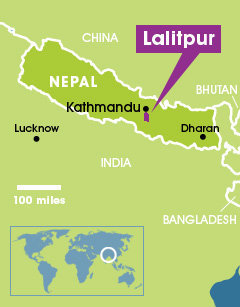By: Mallika Aryal
Send to a friend
The details you provide on this page will not be used to send unsolicited email, and will not be sold to a 3rd party. See privacy policy.
 Five years ago, diseases and storms during the monsoon season would wipe out the majority of Nepali tomato plantations. Discouraged, Nepali farmers slowly started abandoning tomato production. But the tomato is a big part of local cuisine, so Nepal had to import it from India.
Five years ago, diseases and storms during the monsoon season would wipe out the majority of Nepali tomato plantations. Discouraged, Nepali farmers slowly started abandoning tomato production. But the tomato is a big part of local cuisine, so Nepal had to import it from India.
Horticulturist Kedar Budhathoki, based in the Lalitpur district, understood Nepali farmers’ problems. He was already leading a team of scientists working to develop a tomato variety that was resistant to the disease wilt. A few years — and many experiments — later, a local hybrid variety, Shrijana, was born.
Demand grew as the fruit remained popular. And Nepali farmers knew they had found a way to flip the export-import equation. Today, 90 per cent of tomatoes in Nepal are Shrijana and Nepal not only produces all its own tomatoes, but it exports them to several neighbouring states in India.













